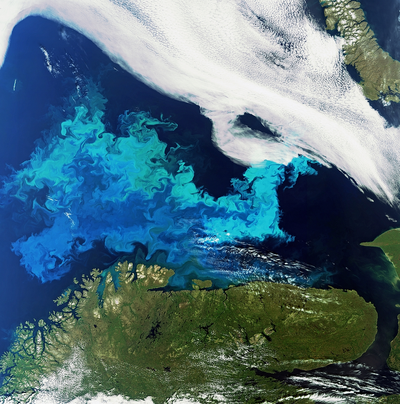The Ocean as an economic area - a competitive Europe
Contents
The ocean provides a wide range of goods and services to man; some of them are directly beneficial to the global economy, others indirectly. A large number of these goods and services are closely linked to genomic technologies.
FISHERIES AND AQUACULTURE[1]
Nutrition
Safe and healthy food is a prime aim of human society. Proteins play a focal role in the human diet and, on average, 20% is of marine origin. This is achieved through both wild capture and aquaculture. However, the former is in decline, with 50% to 90% of the total biomass of top predators having been lost and continuing to be because of unsustainable fishing (Pauly et al. 2002). In particular, open ocean, polar, deepsea and southern hemisphere shelf stocks have not received the scientific attention they deserve. Because of the poor knowledge and concomitant lack of management and enforcement, these fish stocks are being depleted at an alarming rate.
Farming the ocean
The significance of aquaculture as a provider of nutritional protein for a steadily growing world population might equal wild capture fisheries in the near future. Traditional aquaculture has been increasingly supported by technological developments in husbandry, nutrition, disease management and selection. Genomics is playing a significant role in the selective breeding of seaweeds, fish and shellfish via the use of molecular markers associated with characteristics such as stress responses and disease resistance. These types of markers can also be used in paternity testing, pathogen monitoring and have helped fish farmers to control inbreeding and maintain the standard of their brood stocks.
Certification of origin
Once fish and shellfish have been landed, customers increasingly demand authenticity whereas governments face numerous challenges to enforce the law. Genomic fingerprinting provides the means for correct identification, the source of the population and even the identity of the organism’s geographic origin in processed food.
|
Tracing fish and fisheries products
|
RED TIDES AND CONTAMINATED FOOD
Phytoplankton blooms are natural phenomena but when these relate to blooms of toxic algae, then the loss of income and damage to fisheries and aquaculture is substantial. For example the cost of red tides (scientifically referred to as Harmful Algal Blooms or HABs) is estimated at US$ 84 million per year for the US alone and at US$ 850 million per year for the EU. An increase of fish and shellfish farming has been observed worldwide and consequently, reports of harmful algae and human illnesses rise as seafood is increasingly consumed. Large shellfish fisheries are closed for harvesting when concentrations of toxic algae reach a level set by the EU for closure. Monitoring for toxic algae is mandatory for all EU countries with a marine border. Monitoring to avoid human and economic loss can be performed by lab based identification in which DNA methods can distinguish between non-toxic and toxic strains. They are the preferred method for the rapid identification of toxic algae. Quantification with molecular methods still needs improvements. So far only New Zealand has permitted monitoring for toxic algae using molecular methods. Validation of these methods for European waters is outstanding but once accepted will be a major step forward in the detection and implementation of mitigation strategies to minimise the effects of HABs.
